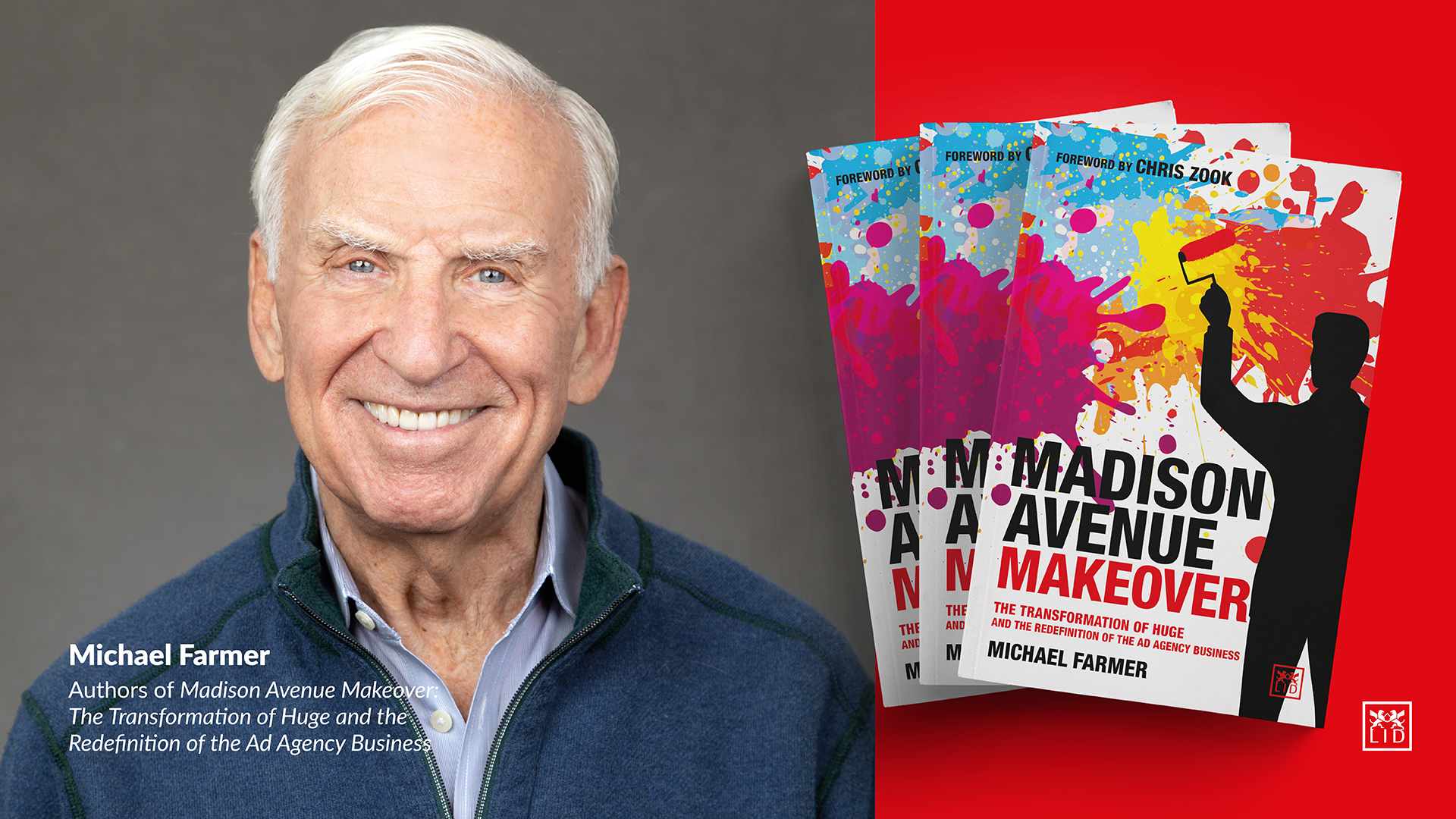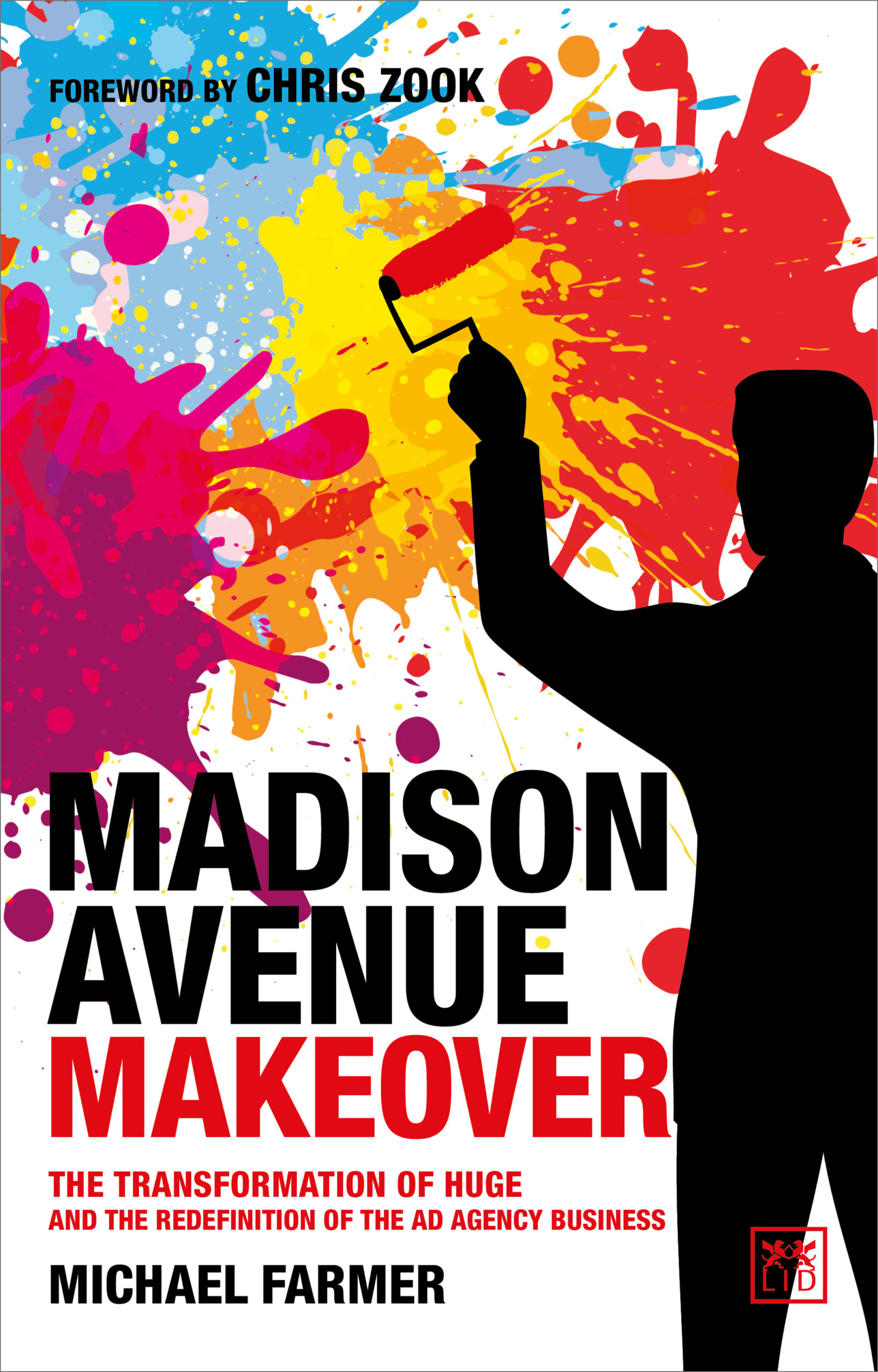|
The Problems and Challenges of the Ad Agency CEO
The Problems and Challenges of the Ad Agency CEO

By Guest Contributor Michael Farmer
Author of Madison Avenue Makeover, Michael Farmer, shares what issues ad agencies’ CEOs are facing and how Mat Baxter, CEO of Huge, made a revolution in the industry.
All CEOs in publicly owned companies face the problem and challenges of how to increase “shareholder value” every year, independent of whatever difficulties their companies and their industries may be facing.
Nearly every major ad agency today went public in the ‘60s and ‘70s, when the advertising industry enjoyed astounding growth and profitability — agencies were paid 15% commissions from their clients’ spend on media, which gave agencies exceptional revenue levels, and clients were spending more and more every year, fueled by a Creative Revolution in TV advertising, which brought unique and amusing ads to the nation’s living rooms every evening.
Eventually, over the next several decades, these major agencies were snapped up by holding companies, who expected them to continue to grow their sales and profitability. IPG, WPP, Omnicom, Publicis Groupe and Dentsu — today’s “Big 5” holding companies — were highly demanding owners, expecting agency CEOs to “make their numbers every year” in order to drive up holding company sales, earnings and share prices.
Alas, 15% commissions disappeared by 2000, replaced by less-attractive fee schemes, and life became more complicated for agency CEOs after 2005, when their agencies had to master digital and social advertising. To make things worse, their clients’ growth slowed down in 2008 with the global financial crisis, and their clients’ procurement departments set about to cut agency fees. The fact that digital and social advertising was creating more work for agencies was ignored by procurement. Procurement had to cut costs in order to maintain the profitability and shareholder value of their own companies.
Under pressure to “make their numbers” in the face of fee cuts, agency CEOs downsized their operations, reducing headcounts and costs by eliminating some of their most senior (and expensive people). Downsizing became the “strategy du jour” for ad agencies. Downsizing liquidated much of the talent that made agencies so attractive during the Creative Revolution, leaving agencies with junior-level staffers who had to struggle to deliver increased creative workloads.
There has been a considerable turnover of agency CEOs since the beginning of the downsizing days, and a new crop of CEOs, who grew up during this fraught era, are beginning to wonder what new strategies they need to adopt to deliver shareholder value to their owners without doing further damage to their agencies.
One of these new CEOs is Mat Baxter, who took the helm of Huge, one of IPG’s digital creative shops, in 2021. Baxter had a background working for media agencies in Australia, his home country, before coming to the States in 2016 to head Initiative, a major IPG media agency. After successfully turning around Initiative over a five-year period of time, Baxter was asked by IPG to take the leadership of Huge, the creative agency that had been stagnant for more than 5 years.
Baxter and his top management team developed a transformation strategy for Huge — focusing on a new mission for clients (deliver accelerated growth), the design new products to be sold at fixed prices, and a reorganization of the 12-office operation so that Huge could operate as a single, global, more-efficient profit center.
All the while, of course, Baxter was expected to deliver attractive numbers while changing Huge — akin to “rebuilding the plane while flying at 30,000 feet.”
Baxter’s transformation of Huge is the first visible effort by an agency CEO to take on the shareholder value challenge while designing a transformational agency strategy.
Will this transformation work? Will Baxter be able to deliver increased shareholder value in the face of Huge’s strategic and operational transformation? The outcome will be clear by 2024, but Huge has already begun its “accelerated growth” work with new clients. Stay tuned for further developments.
ABOUT THE AUTHOR

Suggested Reading
 This book is the riveting story of Huge’s journey through its transformation effort ― from its initiation in 2021 to a rethink of the transformation in May 2022 to a revised structure and plan that put the program back on course ― with some significant delays. “It’s one thing to organize a change plan that assigns responsibilities to senior executives,” mused Baxter, “and another thing to have the sum of their efforts add up to something greater.” Madison Avenue Makeover provides a unique insight into how one company changed in order to survive, and at the same time, redefined the advertising agency business.
This book is the riveting story of Huge’s journey through its transformation effort ― from its initiation in 2021 to a rethink of the transformation in May 2022 to a revised structure and plan that put the program back on course ― with some significant delays. “It’s one thing to organize a change plan that assigns responsibilities to senior executives,” mused Baxter, “and another thing to have the sum of their efforts add up to something greater.” Madison Avenue Makeover provides a unique insight into how one company changed in order to survive, and at the same time, redefined the advertising agency business.
